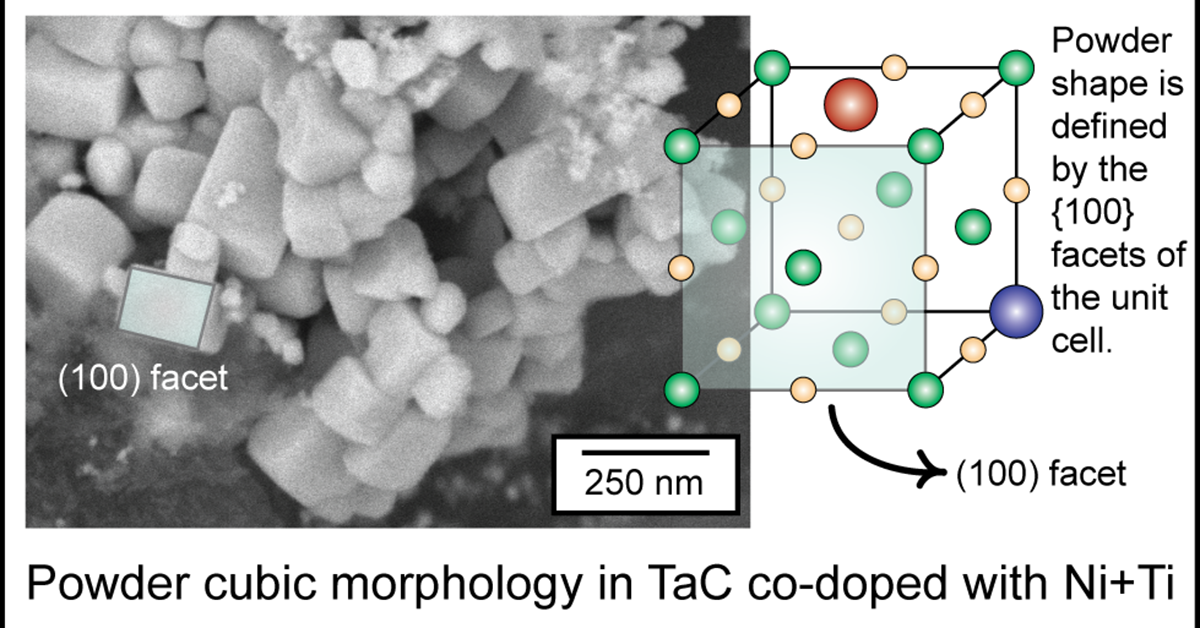A $2 Million UC San Diego Materials Science Win
The NSF grant funds a collaborative effort between three universities to create better-performing materials for concentrated solar, fusion reactors, and hypersonic flight while training the next generation of materials scientists.
Story by:
Published Date
Article Content
Materials science researchers at the University of California San Diego, University of Alabama, and Colorado State University are working together to solve a vexing materials-for-extreme-environments challenge. Their efforts could pave the way for better-performing ceramic materials for a series of critical applications including concentrated solar power, hypersonic flight and nuclear fusion reactors.
The new project is being funded through a nearly $2 million grant from the National Science Foundation (NSF). The award is part of a new $72.5 million NSF investment to design revolutionary materials.
The goal of the project involving UC San Diego is to design ceramic materials that do not melt at extremely high temperatures and – at the same time – are both resistant to fracture at low temperatures and strong at high temperatures. At UC San Diego, this project is led by professor Olivia Graeve. She is the faculty director of UC San Diego’s Graduate Program in Materials Science and Engineering and a professor in the Department of Mechanical and Aerospace Engineering at the UC San Diego Jacobs School of Engineering.
“This NSF grant will provide wonderful opportunities to pursue the kind of materials science research and workforce development that UC San Diego is exceptionally well positioned for. We designed this project so that young researchers will have valuable opportunities to move back and forth between computational and experimental materials science research, while learning to make the best use of all the data being generated along the way,” said Graeve, who also leads the CaliBaja Center for Resilient Materials and Systems at UC San Diego.
This new effort is just one of many research projects led by faculty who teach and train graduate and undergraduate students in materials science at UC San Diego. Learn more about the Program in Materials Science and Engineering at UC San Diego. In addition, UC San Diego is home to a prestigious NSF-funded MRSEC, and the larger materials science ecosystem on campus is interconnected through the Institute for Materials Discovery and Design (IMDD) at UC San Diego.
Better ceramics for a better world
Ceramics that perform well at ultrahigh temperatures are a class of advanced materials that hold great promise for a wide range of extreme-environment applications. But there are drawbacks that must be addressed if these ultrahigh temperature ceramics are going to reach their full potential. At low temperatures, current versions of these ceramics are often quite brittle. And at high temperatures, even if they don’t melt, these ceramics lose strength.
In the past, researchers have found ways to make improvements to either one or the other of these drawbacks, but not both at the same time. Fixing both of these drawbacks simultaneously is exactly what researchers have now been funded to do through this new research project called Topologically Designed and Resilient Ultrahigh Temperature Ceramics. It is part of the NSF program for Designing Materials to Revolutionize and Engineer our Future (DMREF) as well as the NSF Ceramics program.
This project is also part of the Materials Genome Initiative, which is a US Federal multi-agency initiative for discovering, manufacturing, and deploying advanced materials twice as fast and at a fraction of the cost compared to traditional methods. The initiative creates policy, resources, and infrastructure to support U.S. institutions in the adoption of methods for accelerating materials development.
Computational and experimental ceramics research
The project involves designing ceramic materials from the bottom-up, utilizing the materials’ natural lengths scales and chemistry to simultaneously enhance the materials toughness at low temperatures and strength at high temperatures. The team will make use of low symmetry crystal structures with designed elongated shapes that fit together to create an interlocked microstructure.
The researchers will move back and forth between computational simulations, materials synthesis, materials optimization, and materials testing. The models will inform the experiments, and the results from the experiments will be used to improve the models. With this integrated computational and experimental research approach, the team plans to finally solve both the low-temperature brittleness and high-temperature strength issues in the same ceramics at the same time.
Diversifying tomorrow’s materials science workforce
This dynamic research program which links computational simulations, materials synthesis, materials optimization, and materials testing will offer the next generation of scientists and engineers cross-disciplinary training that prepares them for emerging materials science careers in the public and private sectors across the nation.
The positive reach of this project will extend to high school and undergraduate students through summer programs that encourage participation from everyone, including students from backgrounds traditionally underserved in materials science. The research team will also offer workshops that provide high school school teachers with the latest information about trends in materials science, and specifically ceramics. High school teachers will get access to tool sets that help them integrate cutting-edge materials science information into physics, chemistry, and physical science classes.
Share This:
You May Also Like
Engineers Take a Closer Look at How a Plant Virus Primes the Immune System to Fight Cancer
Technology & EngineeringStay in the Know
Keep up with all the latest from UC San Diego. Subscribe to the newsletter today.




